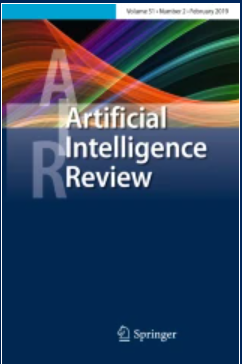摘要
近年来,网络犯罪分子越来越多地采用先进的尖端方法,扩大攻击规模,加快攻击速度。这一趋势与对高技能网络安全专家日益增长的需求和稀缺性不谋而合,这使得他们既昂贵又难找。最近,研究人员展示了人工智能(AI)方法在打击复杂网络攻击方面的有效性。然而,说明人工智能方法在网络攻击检测方面研究的全面文献计量数据仍然很少。本研究通过调查基于人工智能的网络攻击检测研究现状,填补了这一空白。本研究使用文献计量分析方法对 Scopus 数据库中 2014 年至 2024 年间发表的超过 2338 篇文章进行了分析,其中包括 1217 篇期刊论文、828 篇会议论文、121 篇会议综述、85 篇书籍章节、70 篇综述、5 篇社论以及 2 本书籍和短篇调查报告。本研究探讨了全球各种基于人工智能的网络攻击检测方法,重点关注机器学习和深度学习算法。文献计量分析使用开源统计工具 R 和 Biblioshiny 进行。研究结果表明,人工智能(尤其是机器学习和深度学习)可提高入侵检测的准确性,是一种不断发展的研究趋势。研究人员已经有效地将这些技术用于恶意软件检测。美国在人工智能网络攻击研究方面处于领先地位,其次是印度、中国、沙特阿拉伯和澳大利亚。加拿大和意大利尽管发表的文章较少,但也获得了大量引用。此外,美国、中国、澳大利亚、沙特阿拉伯和印度之间的研究合作也很密切。关键词分析凸显了人工智能在识别模式和恶意行为方面的有效性,即使在复杂的网络攻击中也能提高入侵检测能力。机器学习可以根据恶意或被入侵设备以及未知威胁造成的异常情况检测入侵,而且速度快、准确性高、误报率低。Cybercriminals have increasingly adopted advanced and cutting-edge methods that expand the scale and speed of their attacks in recent years. This trend coincides with the rising demand for and scarcity of highly skilled cybersecurity specialists, making them both expensive and difficult to find. Recently, researchers have demonstrated the effectiveness of Artificial Intelligence (AI) approaches in combating sophisticated cyberattacks. However, comprehensive bibliometric data illustrating the study of AI approaches in cyberattack detection remain sparse. This study addresses this gap by investigating the current state of AI-based cyberattack detection research. The study analyzed the Scopus database using bibliometric analysis on a pool of over 2,338 articles published between 2014 and 2024, including 1217 journal articles, 828 conference papers, 121 conference reviews, 85 book chapters, 70 reviews, 5 editorials, and 2 books and short surveys. The study explores various AI-based cyberattack detection approaches globally, focusing on machine learning and deep learning algorithms. The bibliometric analysis was conducted using R, an open-source statistical tool, and Biblioshiny. The findings establish that AI, particularly machine learning and deep learning, enhances intrusion detection accuracy and is a growing research trend. Researchers have effectively employed these techniques for malware detection. The USA leads in AI cyberattack research, followed by India, China, Saudi Arabia, and Australia. Despite publishing fewer articles, Canada and Italy received significant citations. Additionally, strong research collaboration exists among the USA, China, Australia, Saudi Arabia, and India. Keyword analysis highlights AI’s effectiveness in identifying patterns and malicious behaviours, enhancing intrusion detection even in complex cyberattacks. Machine learning can detect intrusions based on anomalies caused by malicious or compromised devices, as well as unknown threats, with speed, accuracy, and a low false-positive rate.

 求助内容:
求助内容: 应助结果提醒方式:
应助结果提醒方式:


